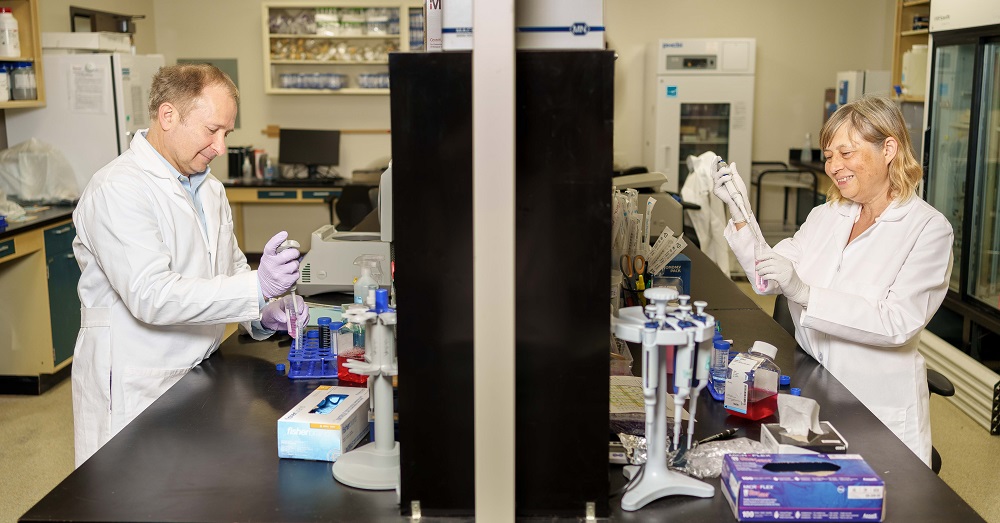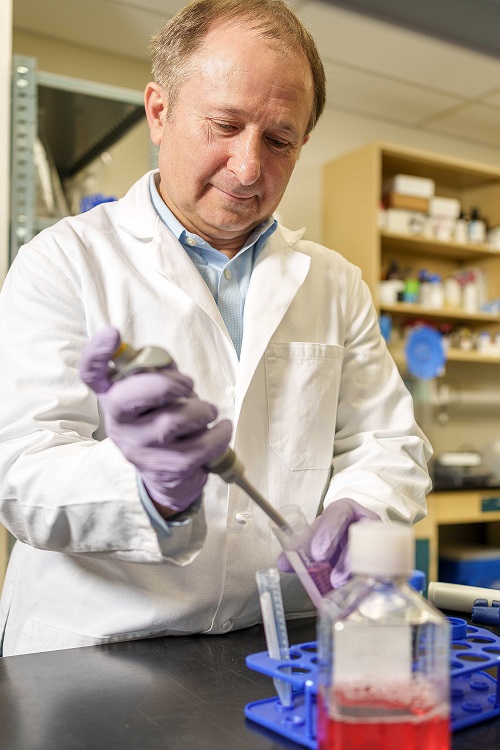
Leishmaniasis is a tropical disease caused by parasites known as Leishmania, which are transmitted to humans and animals through the bites of more than 90 species of sand flies. Considered a neglected tropical disease, leishmaniasis is found in approximately 88 countries primarily located in South and Central America, the Middle East and western Asia. As many as 1 million new cases are diagnosed each year and more than 350 million people are at risk of infection. Some forms of the disease also have emerged in Mexico and Texas in recent years.

Because there are very few alternatives for treating the disease, there exists an urgent need to understand the resistance mechanisms associated with antimonial drugs so that more effective treatment options can be developed. To help address the dearth of leishmaniasis treatment options, a team of researchers led by Zemfira Karamysheva, Ph.D., from Texas Tech University (TTU) and Andrey Karamyshev, Ph.D., from the Texas Tech University Health Sciences Center (TTUHSC) recently completed a study to determine the molecular mechanisms responsible for producing antimony drug resistance in Leishmania parasites.
The research team also included first author Sneider Alexander Gutierrez Guarnizo, Ph.D., from TTUHSC and the University of Antioquia in Medellín, Antioquia, Colombia; Elena Tikhonova, Ph.D., (TTUHSC); and Carlos Muskus, Ph.D., (University of Antioquia). Their study, “Translational reprogramming as a driver of antimony-drug resistance in Leishmania,” was published in May by Nature Communications. It also was featured by the journal editors’ Highlights of Recent Research at www.nature.com/collections/jedgcgeija.
Leishmaniasis is a zoonotic disease, which means it affects not only humans, but also other animals such as dogs, horses, rodents, armadillos and many others. It can appear in several forms, depending on the strain involved and the condition of the host’s immune system. Those infected with cutaneous leishmaniasis experience painful skin ulcers, while those who contract mucocutaneous leishmaniasis develop sores and damaged tissue in the mouth, on the lips or in the mucous membranes of the nose. Visceral leishmaniasis, which is the most dangerous form of the disease, affects internal organs such as the spleen, liver and bone marrow and results in 20,000 to 30,000 deaths annually.
For the last 70 years, chemotherapy using pentavalent antimonials such as sodium stibogluconate (Pentostam) and meglumine antimoniate (Glucantime) has been the primary regimen used to treat leishmaniasis. However, the efficacy of antimonials is steadily diminishing over time, and the disease’s resistance to pentavalent antimonials has significantly increased.

Karamyshev said the development of drug resistance in leishmaniasis is similar to that in cancer patients who develop resistance to chemotherapies. When treated with chemotherapy drugs, Leishmania parasites, like cancer cells, also develop resistance. However, resistance in leishmaniasis differs from that of cancer because it lacks transcriptional regulation (the process used by cells to control the conversion of DNA to RNA) and it is primarily regulated by protein synthesis. The protein production contributes to the development of drug resistance.
“This was the goal of the study: to find out how protein synthesis regulation contributes to the development of antimony resistance,” Karamyshev said. “Basically, how do changes in protein production contribute to drug resistance?”
Karamysheva said the team conducted two types of comparisons using one group of Leishmania parasites that were sensitive to the drug, and a group of drug-resistant Leishmania parasites which were developed by gradually increasing the drug concentration over a six-month period.
“We compared how in the resistant parasites, the protein production is different from that of the sensitive parasites,” Karamysheva said. “We also compared the drug-resistant parasite without the drug to the drug-resistant parasite with the drug to see the drug response.”
Karamysheva said the most interesting finding was that even without the drug, the drug-resistant parasites have two totally different protein production profiles in comparison with sensitive parasites.
“Many, many proteins are produced differently in the drug-resistant parasite, so we basically observed global reprogramming of the protein production; we think this is pre-emptive adaptation,” Karamysheva explained. “That's why we were very interested to understand how that resistance is being developed in those parasites. Specifically, we wanted to know the role of translational control (protein production) in the development of drug resistance in Leishmania.”
Pre-emptive adaptations — specific changes that occur during drug resistance development when the parasite may acquire multiple adaptations — equip parasites with the capability to instantly and effectively respond to an anticipated threat. These adaptations remain in place when the drug is absent, and they start working to support parasite survival when drug exposure occurs. That means that even in the absence of the drug the Leishmania parasite remains ready to see and react to the drug. In addition, the many protein changes that were observed in the study (2,431) equip the Leishmania parasite with certain pre-emptive adaptions that helps it locate the drug more efficiently. Conversely, the team observed a very limited number of proteins (189) that change their expression in the drug-resistant parasites that were treated with the drug.
Karamyshev said one major point developed through the leishmania comparisons is that the parasites equipped with pre-emptive adaptation can respond very effectively when they see the drug and do not need to make significant adaptations to respond to the drug presence. The comparisons also demonstrated that proteins help to contribute to the development of drug resistance.
“There are multiple mechanisms that can contribute to drug resistance, such as how the parasite fights oxidative stress or how effectively the parasite can efflux the drug outside the cell,” Karamysheva added. “We want to see the whole picture how it's happening.”
Identifying 189 differentially expressed proteins in the drug-resistant strain treated with the drug provides the research team with 189 potential drug targets for treating leishmaniasis. In future research, they will evaluate the function of each of the 189 proteins in relation to drug resistance. They also will use a process known as drug repurposing to search for ways to overcome drug resistance. The process will involve testing drugs that previously have been approved by the FDA because they target certain human genes. Similar genes also may be present in Leishmania, and Karamyshev said the team has indeed identified several such genes.
“Basically we have the genes which can contribute to drug resistance, and we have these FDA-approved drugs that could potentially target these genes and be repurposed to treat leishmaniasis,” Karamyshev said. “It's not part of this paper, but this study can serve as a foundation to find the possible drugs that can target the proteins which were specifically expressed or specifically synthesized in our comparisons. And now we know what those proteins are.”
